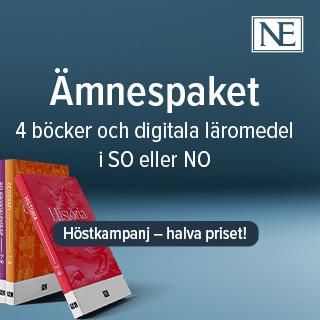Peer learning on clinical wards: supervision, student activities and the learning environment
Anna Dyar har utforskat peer learning och handledning av peer learning bland handledare av sjuksköterskestudenter på vårdavdelning. Peer learning innebär att människor med likartad ämnesinriktning och kompetensnivå som inte själva är professionella lärare hjälper varandra att lära sig genom att undervisa.
Anna Dyar
Anna Kiessling, Karolinska Institutet Terese Stenfors, Karolinska Institutet Hanna Lachmann, Karolinska Institutet
Docent Mette Krogh Christensen, Aarhus University
Karolinska Institutet
2022-12-02
Peer learning on clinical wards: supervision, student activities and the learning environment
Peer learning on clinical wards: supervision, student activities and the learning environment
ntroduction: Worldwide, a growing number of healthcare students require clinical environments for learning. Multiple students are placed on clinical wards simultaneously with one supervisor to meet this demand. This can create stress for the supervisor and reduce the quality of learning for students. To ensure continued quality of education, some wards have formally adopted peer learning as a pedagogical framework. Peer learning has been widely shown to have advantages for students, such as developing teaching skills, teamwork, and independence. A deeper understanding is needed of the characteristics of wards that use peer learning as a pedagogical framework, and how these compare to wards that do not. In particular, it is important to explore the nature of supervision in the context of peer learning.
Methods: An observational study (I) was conducted on a ward adapted to student peer learning to describe the learning environment. Student nurses, supervisors and other staff were observed, complemented by audio diaries and informal questioning. Field notes were thematically analysed. The findings on the supervisor’s role inspired study II which explored the different ways clinical supervisors view their role in students’ peer learning. Semi-structured interviews were performed with 15 supervisors of student nurses from two wards adapted to student peer learning. Transcribed data were coded and analysed using a phenomenographic approach. Study III aimed to explore which of the characteristics and ways of viewing the supervisor role from studies I and II were present in other wards. To investigate this, a questionnaire was developed and psychometrically using the AMEE 7-step guide, and piloted with 46 nurse supervisors. Participants from wards that used peer learning as a pedagogical framework were compared with those that did not. We analysed the pilot results using basic statistics and multivariable discriminant analysis and Variable Importance in Projection.
Results: The observational study (I) identified that a ward adapted to student peer learning had student-led learning; student-dedicated space; peer learning; personalised relationships; an inter-professional approach; and supervisors who were motivated to teach. The questionnaire study (III) found that other wards that used peer learning as a pedagogical framework shared these features, however that only the first three of these characteristics were significantly higher than in wards that did not use peer learning as a pedagogical framework. The interview study (II) found four ways in which the supervisors viewed their role in students’ peer learning: the teacher; the facilitator; the stimulator; and the team player.
Discussion and conclusions: The observed ward (study I) had a community of practice centred on student learning. Peer learning supervisors’ broadest view of their role was as a team player, supporting the educational enterprise of the ward community (study II). The pilot questionnaire (study III) found differences between some characteristics of the learning environment on different types of wards. A next step is to conduct the questionnaire on a larger scale to explore further the ways in which the pedagogical framework and peer learning can affect supervision and the learning environment. Using a pedagogical framework on a clinical ward could be a key factor in developing a community of practice centred on student learning.
Relaterade länkar

Modersmål
 Åk F–9
Åk F–9 Flickor med autism och adhd i skolan
 Åk F–Gy
Åk F–Gy 






